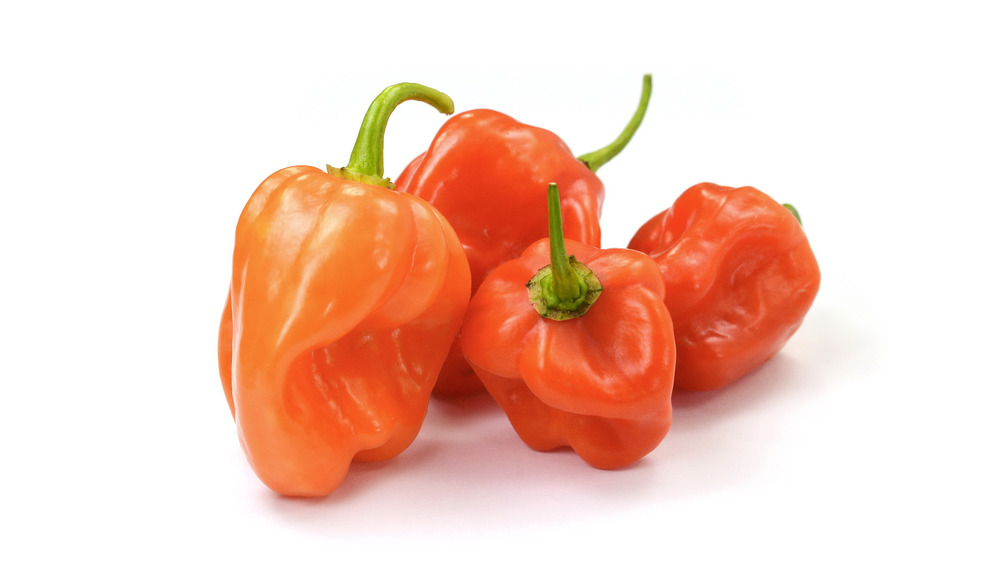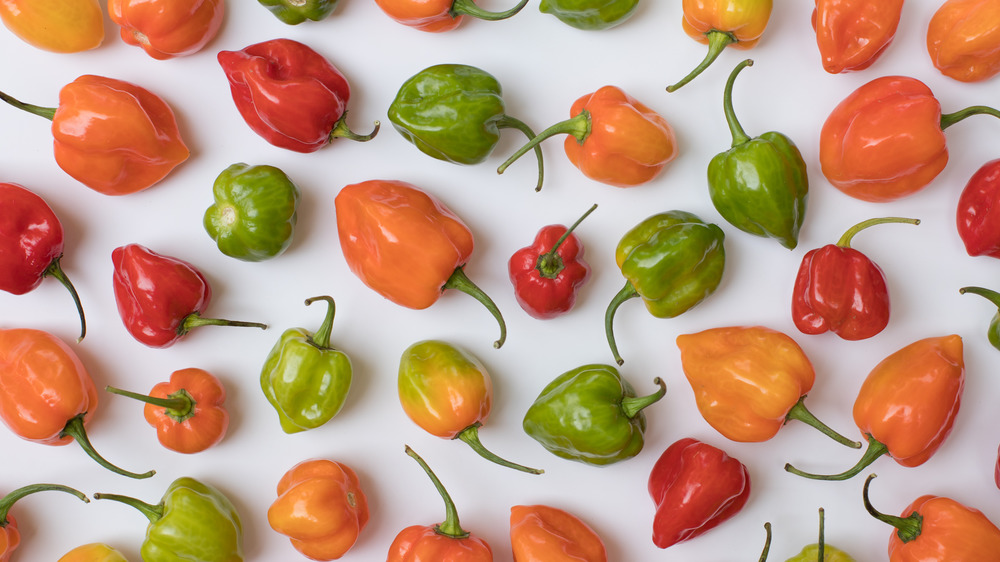How Spicy Is A Habanero Pepper Really?
We may receive a commission on purchases made from links.
Do you love spicy peppers in your meals? Have you ever seen a recipe or menu item featuring habanero peppers and wondered just how spicy they are in comparison to other peppers you've eaten in the past? Well before diving into that question, one of the most important things you need to understand is how the spice level of peppers is ranked.
Using the Scoville Scale you'll be able to measure the spiciness of various chili peppers, including the habanero, and see how they stack up to one another. ThoughtCo states that the name of the Scoville Scale came from its originator, Wilbur Scoville, an American pharmacist. Scoville created the test to "measure the amount of capsaicin in hot peppers" in 1912. Capsaicin is a chemical that causes the spicy, burning sensation in peppers. Good news if you're a spice fan: U.S. Pharmacist suggests that capsaicin has incredible benefits such as reducing arthritis and musculoskeletal pain.
Where do habaneros fall on the Scoville Scale
On the Scoville Scale, PepperScale states that a habanero pepper has between 100,000 and 350,000 Scoville heat units, or SHU. But what does this mean exactly in relationship to other peppers? Well, the habanero pepper is only the 10th hottest in a ranking of 24 peppers by MasterClass. The hottest listed is pure capsaicin, at 16,000,000 SHU, and at the bottom of the rankings is the bell pepper, with 0 SHU. So while a habanero is hot, it is not the hottest pepper available by far. PepperScale says of habanero peppers, "there's quite a bit of flavor to go along with the extra-hot kick. It has a unique, citrus-like taste with a subtle hint of smoke that makes it very popular in hot sauces, powders, and rubs."
Ready to incorporate this pepper into your cooking? The Spruce Eats writes, "When selecting habanero, don't touch the pepper with your bare hands. Instead, use the produce bag to pick up the pepper and examine it. The pepper should look fresh and feel firm. The skin should be smooth and shiny, with a sunny, deep orange color; red means it's perfectly ripe, though either is fine."

